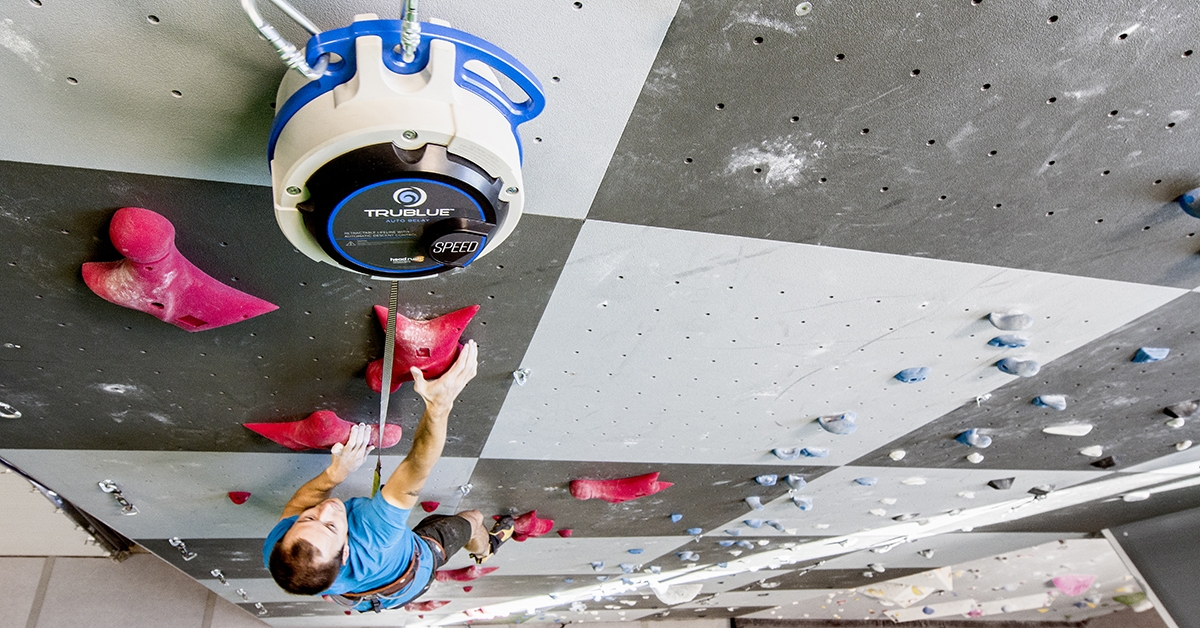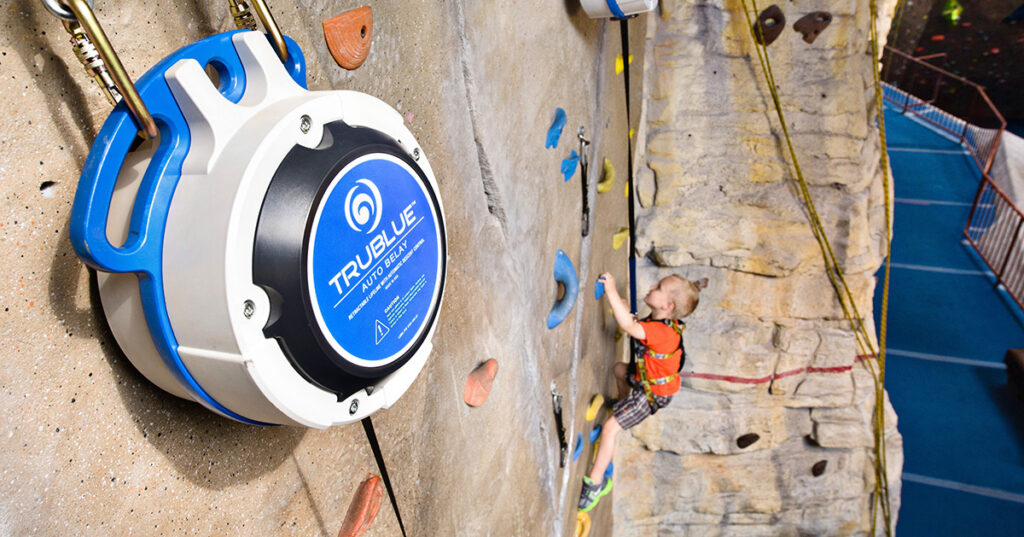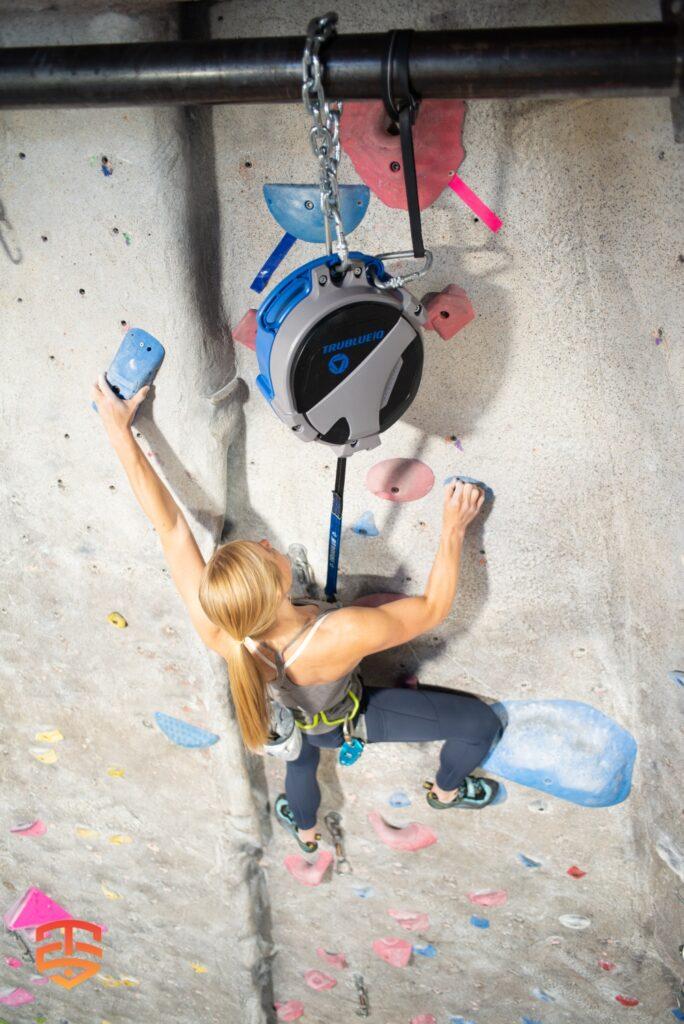
Learning to climb has a different connotation for children than it does for teenagers or adults. It is commonly known that climbing helps children develop. Kids who climb are more creative problem solvers, have better spatial awareness, coordination, strength, endurance, and flexibility. They are also less stressed, more confident, and more cooperative with others.
Of course, that is thinking about the situation from the viewpoint of an adult.
“Kids don’t care that memorizing and recognizing patterns, which are important life skills, are taught to them by following a specific order of holds. They do it because they enjoy it.”
They engage in it because they enjoy it and want to have fun. And where else except a climbing gym could you find a bigger playground?
“Play is vital to development because it enhances children’s and adolescents’ cognitive, physical, social, and emotional health. Play also provides a fantastic opportunity for parents to interact completely with their kids, according to Dr. Kenneth R. Ginsburg in a piece for the American Academy of Pediatrics.
Dr. Ginsburg continues by saying that although they must carefully balance being a part of the game and taking control of it, adults can engage in play and even contribute to its positive effects.
“Adults should participate in play to a large extent in the ideal world, but when play is governed by adults, children submit to adult concerns and regulations and lose some of the advantages play provides, particularly in terms of developing creativity, leadership, and teamwork abilities.”, Professor Ken Ginsburg.
This led me to wondering: as professionals in the climbing industry, what tactics can we use to foster a love of climbing in children while still enabling them to reap the rewards and experience the intended growth from their playtime?

How children can learn new skills from climbing games
When teaching youngsters how to climb, having fun is more important than teaching them the traditional protocol of getting to the top, whether bouldering, top roping, or climbing on an automatic belay.
The improper introduction to climbing can result in a lifetime dislike of the sport, but positive coaching can foster a lifetime passion, because young children are at such a vital stage in their mental development.
Parent and climbing instructor Ari Schneider claims as much in his excellent piece Coaching Kids – 7 Ways 7 Year Olds Learn to Climb.
One of the most important lessons to be learned from Schneider’s work is how crucial it is to approach climbing instruction by emphasizing pleasure and enjoyment. The main goal is to have fun—more important than reaching the summit, following a set path, or even perfecting precise form. Teaching children to climb still has all of those other amazing advantages, but they happen incidentally. The most important thing is to simply go climbing.
Focusing on the enjoyable aspects of climbing provides children with all the health advantages that parents desire in a way that motivates children to ask for more, much like stuffing celery sticks with peanut butter or sneaking bits of broccoli into mac and cheese.
Confidence-building bouldering games
The bouldering area is an excellent place for kids to learn how to play well-known climbing games like Add-On or Simon Says since they are free to move around and wander off route with little repercussion (basically just the regular game, but on a climbing wall).
For any children who might be wary of rising too high off the ground, traversing is a great warm-up exercise or a wonderful place to begin. Additionally, having a substantially cushioned floor beneath you is always a good idea, as anyone who has spent any amount of time around young children can also confirm.
Permitting parents to play
Auto belays can provide a fun opportunity for parents to play together with their children on the high walls. The ability for parents to climb alongside their children is one of the best things about auto belays, as Chris Sharma himself pointed out to us.
Sharma stated of being able to climb with his daughter, “I can literally be right next to her.” “That truly opens up new possibilities for new encounters,” one person said.
John Hur, the general manager of Macon Rocks in Georgia, described a comparable incident at his own site in an interview with the CWA.
Hur stated that auto belays were used to construct half of the wall terrain. “This makes it possible for families who are new to the activity to climb side by side. So it’s not unusual to see a child between the ages of five and seven climbing alongside his parent in the lane across. Therefore, it merely paves the way for the beginning of a very intimate experience with families and others.
Viewpoint from a parent on the TRUBLUE IQ+
By making a few small tweaks, gym owners and route planners can help to facilitate this activity:
- Make a space in the gym designated just for auto belays. The additional benefit of being conveniently supervised by a staff member for any safety concerns is another advantage of having a separate auto belay location. If there isn’t enough room for a whole section, place your current auto belays close enough to one another so that climbers can ascend together.
- A few short-reach routes should be placed beneath the auto belays. Kids can climb very well. Unfortunately, they give up arm length to make up for their superior strength-to-weight ratio.

Vertical Auto Belay systems
Grow your climbing community by providing more access to more routes for more climbers.
Auto Belay makes climbing simple and approachable, turning first-time users into return customers. TRUBLUE Auto Belays are engineered to minimize maintenance and are built to last. Our patented magnetic braking system, delivers the smoothest user experience, the highest level of reliability, and dramatically reduces device downtime.
Dive Deeper: Exploring Auto Belay Technology with Expert Insights
Auto belays are transforming the world of indoor climbing, offering convenience and safety for climbers of all levels. But how exactly do they work, and what are the key considerations for using them? To learn more about the intricacies of auto belay technology and gain valuable insights from experts in the field, check out our additional resources below…
- Comparison of Auto Belay’s: what’s new in the TRUBLUE iQ series
- Using Technology to Make Your Climbing Gym Accessible and Inclusive
- A Closer Look at the Auto Belay System
- Next Generation Auto Belay – TRUBLUE iQ
- Every modern climbing gym should have these 5 features
- Everything You Need to Know about Buying Auto Belays
- Increase Revenue and Customer Satisfaction at Family Entertainment Centers
- Catch-and-Hold: What is it and how does it work?
- Leading the Way in profitable and safe climbing
- Why Family Entertainment Centers Trust TRUBLUE Auto Belays
- Creating Value for Customers by Using an Auto Belay
- TRUBLUE iQ+ World’s first catch-and-hold auto belay
- Drive Revenue and Customer Satisfaction with Auto Belays
- 7 Ways Magnetic Braking Is Better Than Friction
- No Belayer Necessary: Understanding Auto belays
- Competitive Advantage of an Auto Belay
- ROI at Climbing Walls and Family Entertainment Centers
- Auto-Belay and hands-free climbing challenges
- Why using Auto Belays Boosts your Business
- The Science of Eddy Current Magnetic Braking
-
 TRUBLUE iQ+ | Catch & Hold Auto Belay€ 4.399,00 – € 4.599,00 Ex VAT
TRUBLUE iQ+ | Catch & Hold Auto Belay€ 4.399,00 – € 4.599,00 Ex VAT -
 TRUBLUE SPEED Auto Belay | 7,5 – 16 meter€ 2.799,00 – € 2.899,00 Ex VAT
TRUBLUE SPEED Auto Belay | 7,5 – 16 meter€ 2.799,00 – € 2.899,00 Ex VAT -
 TRUBLUE iQ Auto Belay | 4,5 – 20 meter€ 2.799,00 – € 2.999,00 Ex VAT
TRUBLUE iQ Auto Belay | 4,5 – 20 meter€ 2.799,00 – € 2.999,00 Ex VAT







